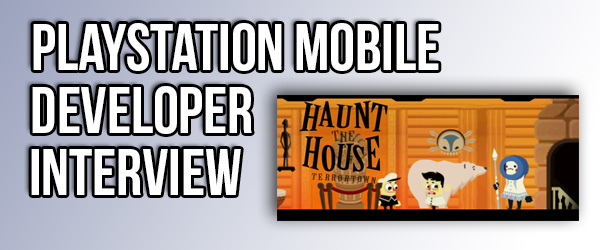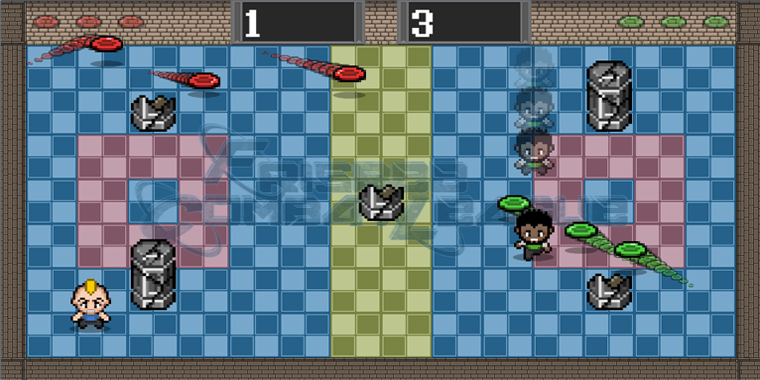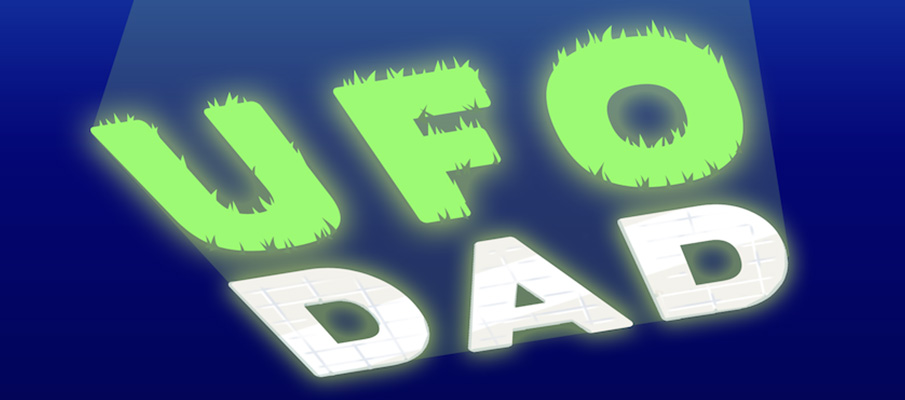
PlayStation Mobile Developer Interview: Haunt The House: Terrortown
Posted by Chris K on February 7th, 2013 | 0 Comments | Tags: Haunt the House: Terrortown , PSM Q/A
About a month or so ago I had the chance to ask Tom Vian one of the developers behind Haunt The House: Terrortown a few questions about the game and what it was like to bring it to PSM.
If you haven’t had the chance to check the game out already, it really is one of the best looking games on Vita. So you should remedy that after reading our interview.
Q: What is Haunt The House: Terrortown?
Haunt the House: Terrortown is a… ahem… spiritual sequel to our 2010 Flash game Haunt the House. You play a young ghost who wants every living soul out of his town before the night is over. You can possess objects around the town and use each object’s unique powers to scare the townsfolk into leaving.
Q: What was the process like bringing the ideas from the flash game over to PSM?
The programming language used for PSM is C#, which shares a lot of similarities with AS3 development in Flash. Some of the core game code was actually copied straight across from the original game and changed into C#. The main difference is that Flash has it’s own vector drawing tools, which Adam has over 10 years of practice with, whereas PSM uses PNG images. We solved that problem by creating a custom tool that took Adam’s Flash animations and turned them into optimised PNG parts and the data needed to reconstruct the animation. Once that was up and running, we could work in much the same way we always have!
Q: Why did you decide to bring the game to PSM?
Through an indie games chum, I was introduced last year to Shahid at Sony, who was on the lookout for indie devs to bring titles to their upcoming PSM platform. As soon as Adam and I heard the details, we knew that a new Haunt the House game would be a perfect fit, especially for the PS Vita. The original was the kind of game you can mess around with for 2 minutes, or sit down and play for an hour or two, so we thought that it would translate well to mobile gaming.
Q: Are there any hidden ways to scare people?
Well, beyond simply using object’s powers, people in the game influence each other. If a terrified person runs into a room with calm people, they will become unnerved, while at the same time soothing the poor frightened soul. Each persons randomly generated personality will determine how much they can influence/be influenced, and how easily scared they are in the first place. Each object also has a ‘volume’ stat, which affects how strongly it scares people who are looking the other way and can only hear what’s going on. You can use louder objects to scare more people in a room by turning them around first!
Q: How do you keep track of score? Is it best to scare the most people and kill the least amount?
The formula for the rating you get at the end of the game is a closely guarded secret, but I will say that causing people to jump out of windows being good or bad is up to the player. We had people take the original game and aim for a no-suicide run, and we had just the opposite, their goal being to clear the area only by terrifying people out of their minds so that they all jump.
Q: Which of the four zones is your favorite?
I think that my favourite is the museum. It has the most diverse and bizarre objects, and the music for the area is, I think, the most catchy!
Q: Are there any plans to bring new areas to the game via DLC?
We’re not certain at the moment. Each area involves a large background, a new piece of music and a ton of new objects to think up, draw and animate. The game also is pushing the tight PSM memory restrictions to their limits with the 5 areas currently in the game, we might have a difficult time adding in more areas while keeping in-play loading times out of the game. Still, it’s something we’re thinking about, and depending on how well the game does, we’ll have to see!
Q: Is there anything else you would like our readers to know?
I’d love to talk about the soundtrack and voice acting!
We brought on board Raphael Benjamin Meyer as our composer, who we’d already been working with on our Detective Grimoire project. Our original intention was that the music would blend seamlessly between areas, and that’s how all 6 tracks were written. Sadly that turned out not to be possible from a technical standpoint just yet on PSM, but the music still helps set a very definite mood for each area and the game as a whole. Not only did Raphael compose the tracks, he got an amazing team of live musicians together to record the lead parts in his studio in Switzerland, even whistling on a few tracks!
In the original game, we had only a few voice sound effects, all from stock sound sources. This time around, we called on our ever-growing list of voice actor friends to provide properly voiced people and ghosts! Kimlinh Tran, a voice actor we met on the same Detective Grimoire project as Raphael, acted as our voice director, wrangling the various other actors and doing a few characters herself! We ended up with a suite of vocal personalities to assign to the people around town, and without giving too much away, there’s more than one set of ghost voices in the game…
Thanks again to Tom. You can check out Haunt The House: Terrortown on PlayStation Vita and select PlayStation Certified devices for $3.49.










